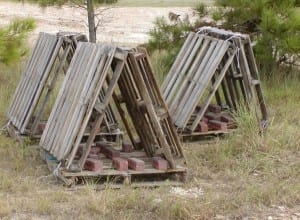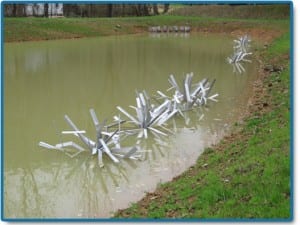The Ohio Environmental Protection Agency is coordinating a federal, state and local effort to develop 1,500 feet of fish shelf in the lower two miles of the river, an area best known for its hard-armored and sheet-piled riverbanks. The project will provide northern pike, muskellunge and other native fish species a shallow water habitat necessary for foraging and spawning. “We are nearly tripling the amount of constructed habitat and expect it will result in significantly improved fish populations,” said Scott Nally, director of the Ohio EPA.
“Completion of this project will put the Ashtabula River on the road to recovery so it can be taken off the clean-up list,” said Cameron Davis, senior adviser to U.S. EPA Administrator Lisa P. Jackson. “With the tireless work of citizens, local, state and federal agencies, the Great Lakes Restoration Initiative is helping to get results here and around the rest of the Great Lakes.”
Ohio EPA’s contractor, R. B. Jergens Contractors of Vandalia, is mobilizing equipment and installing sediment controls, and soon will begin excavating soils along the banks of the slip. This fall, workers will install large rock, sand and other substrate materials. Terrestrial and aquatic plantings will round out the project, which is expected to be completed in the summer of 2012. Ohio EPA staff will be onsite during much of the construction.
The slip is an 11-acre peninsula located one mile upstream from where the Ashtabula River drains to Lake Erie. It’s owned by the Norfolk Southern Railway Company, the property is the only location within the AOC where substantial underwater and shoreline habitat restoration work can be offered. 
The lower two miles of the river and outer harbor comprise the Ashtabula River “Area of Concern”, one of 43 designated areas within the Great Lakes basin where historical industrial practices and other manmade impacts have caused severe environmental degradation. Efforts to clean up the Ashtabula River “Area of Concern” began in the 1980s with development of the Ashtabula River Remedial Action Plan and culminated in 2007 with the removal of approximately 500,000 cubic yards of contaminated sediments from the river. The dredged sediments contained a variety of chemicals including polychlorinated biphenyls, uranium, radium and thorium.
With the contamination threat contained, recent efforts have focused on restoration. In 2010, approximately 850 feet of fish shelf was constructed on the northeast side of the slip. The additional 1,500 feet of fish shelf now under construction will result in underwater habitat along approximately a half-mile or 10% of the riverbank located in the “Area of Concern.”
Published by The Business Journal, Youngstown, Ohio.
See the dozens of unique artificial fish habitat models, fish attractors and fish cover used at fishiding.com, the industry leader and only science based, man made and artificial fish habitat, proven to provide all fish with cover they prefer to prosper.

